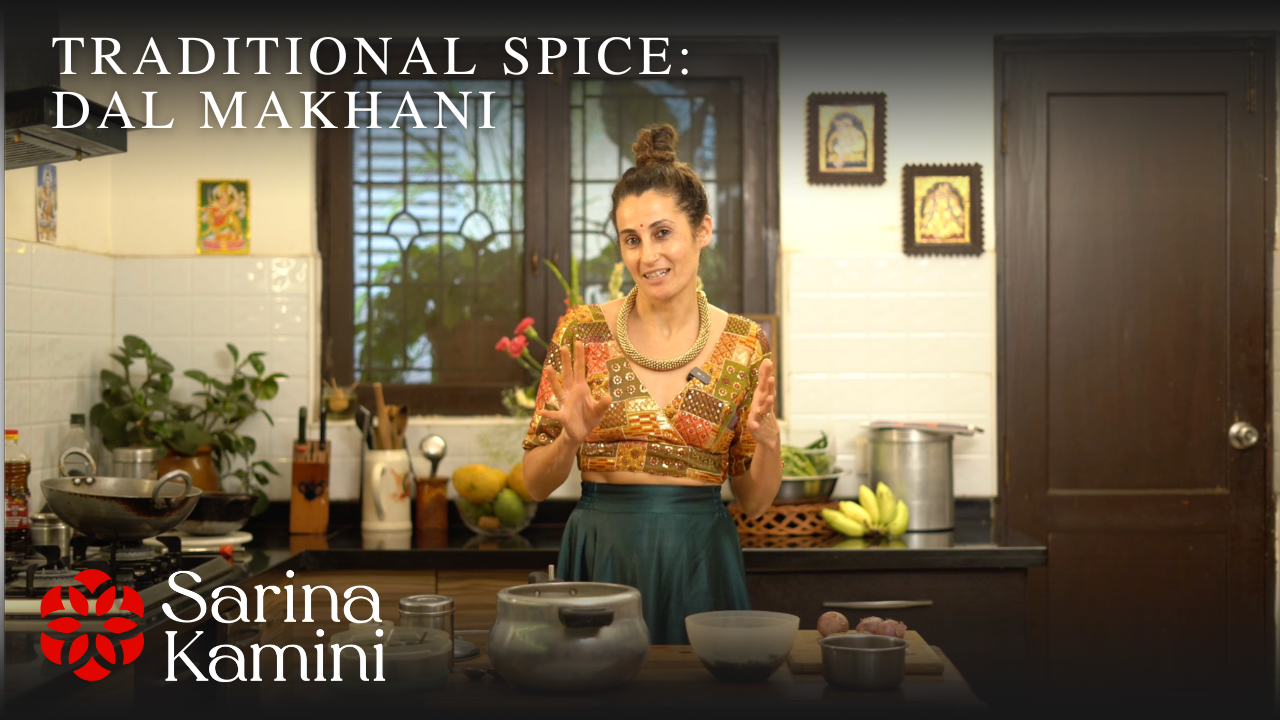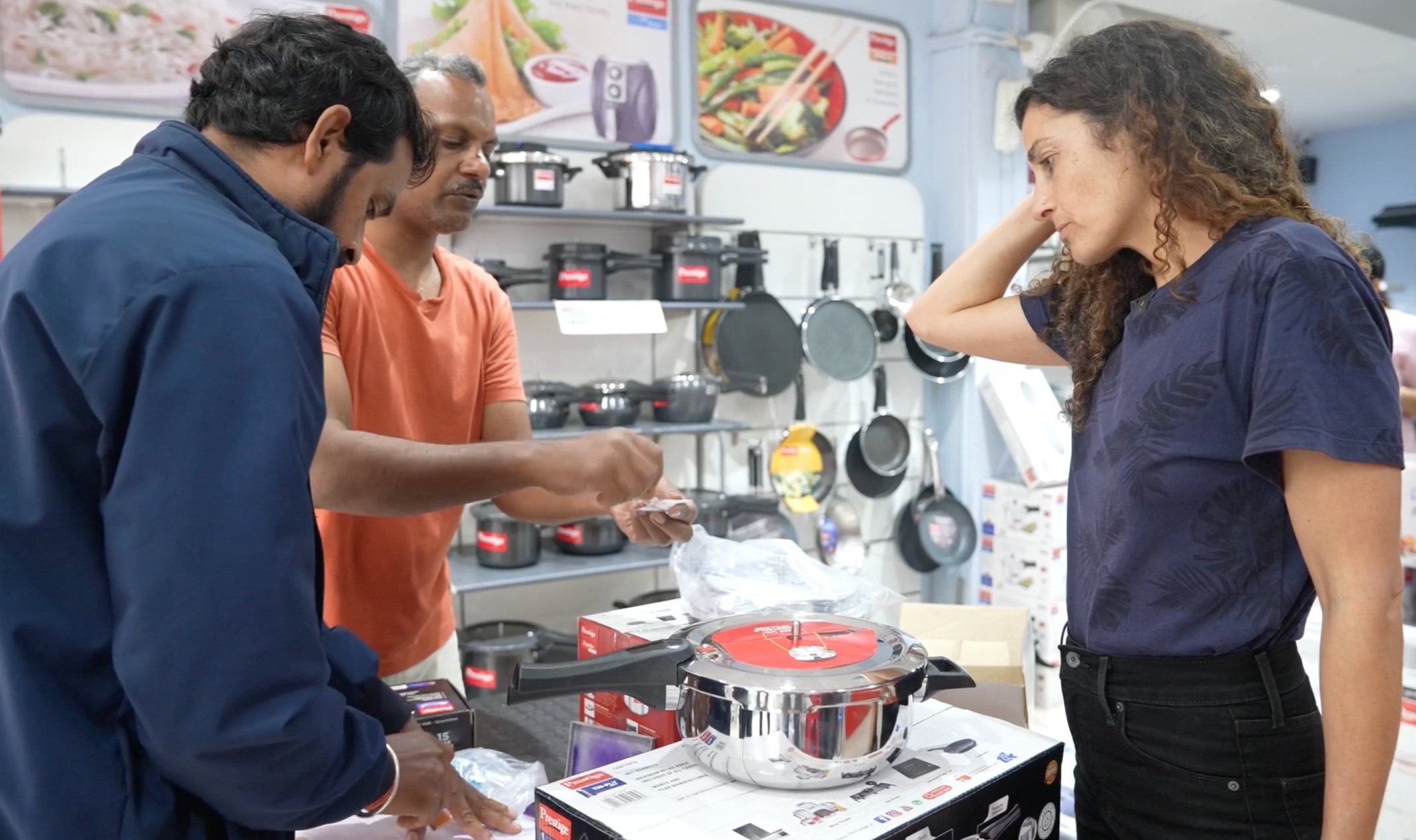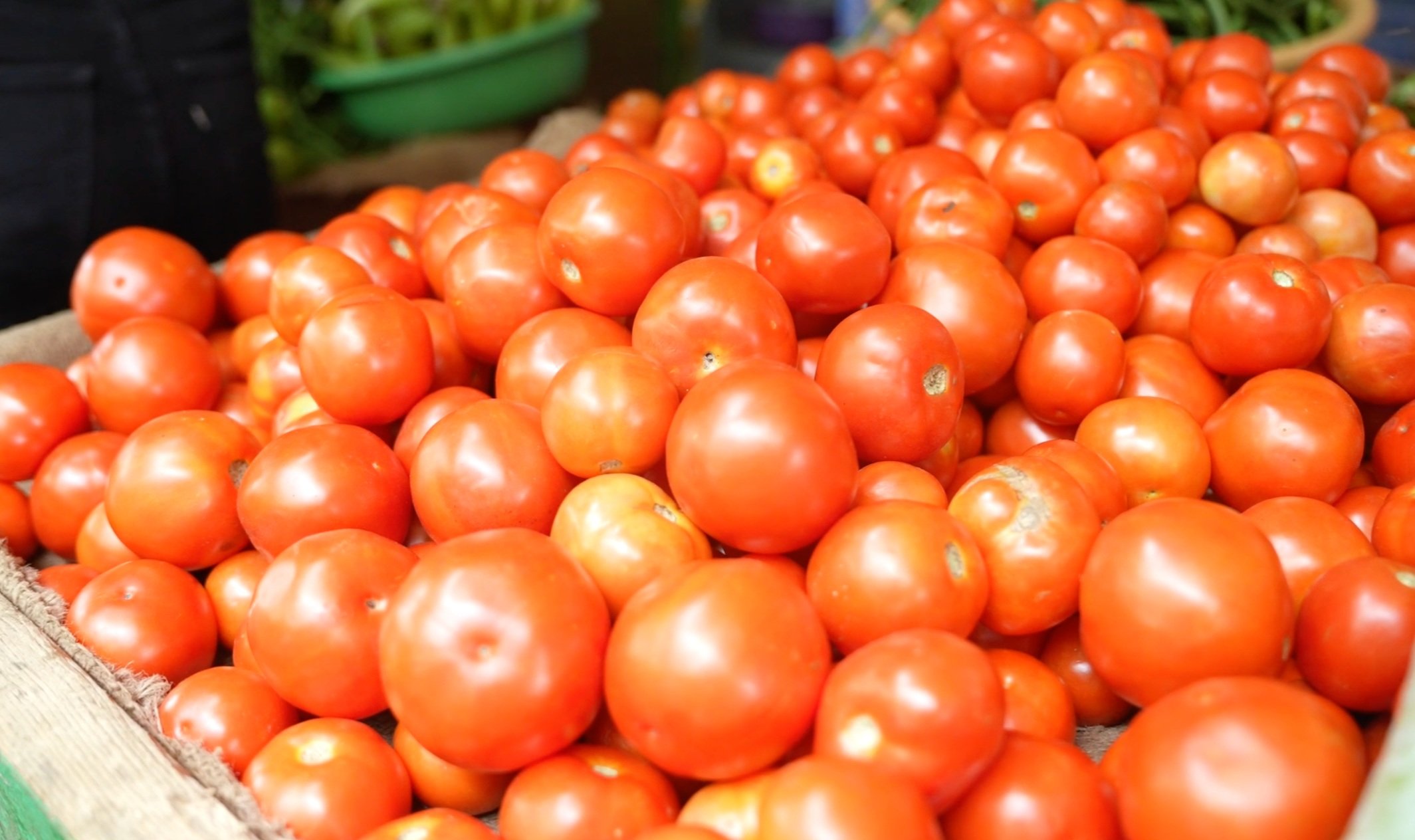DAL MAKHANI
DAL MAKHANI

MAKE OUR DELICIOUS DAL MAKHANI RECIPE AT HOME.
Dal makhani is a festive Indian dal recipe made rich with ghee, butter and cream. Our dal makhani recipe has more interesting spice than many restaurant versions, making it a deliciously decadent addition to your celebratory Indian table. Learn all the tips for how to make and serve this beautiful dal.
Find out the best tips for cooking dal makhani >
RECIPE DETAILS
Serves: 8
Cooking time: 60 minutes + overnight soaking time.
Dietary Style: Gluten Free. Vegetarian.
INGREDIENTS
SOAK 24 HOURS IN ADVANCE
- 3/4 cup black urd dal
- 1/4 cup rajma / red kidney beans
TO PRESSURE COOK
- 3 cups water
- 2 tsp fine white sea salt
STARTING THE SECOND COOK
- 40 grams salted butter
- 40 grams ghee
- 1 large pink onion, minced
- 2 tbsp garlic and ginger paste
- .5 cup tomato paste
THE MASALA
- 1 tsp Kashmiri chilli powder
- 1 tsp garam masala
- 2 tsp fleur de sel
FOR THE SIMMER
- 1.5 cups water
TO FINISH
- 1 tbsp salted butter
- a few glugs of thick cream
- .5 tsp red chilli powder
METHOD
How to make our dal makhani recipe.
STEP 1
Strain the soaked urd dal and red kidney beans and put them in a pressure cooker with the water and salt. Set on high heat and cook until the pressure cooker emits 10 whistles. Turn to medium and then continue to cook fora further 10 minutes. Let the pressure cooker depressurise on its own, and then check the dal. You’ll see that the lentils and the kidney beans will hold their shape, but they should be soft enough to mash. Reset to pressure if you’re not quite there.
Without a pressure cooker, use a heavy-based pot and cook the urd dal and rajma on low for 90 minutes to 2 hours until tender enough to mash.
Once cooked, mash and then set aside.
STEP 2
To start the second part of the cook, pull out a kadai, heavy wok, or heavy bottomed pot, and heat the butter and ghee on a medium heat. Add the minced onion and cook for around five to seven minutes, or until it is translucent but not caramelised—this dish doesn’t need the heaviness. Then add the garlic and ginger paste. Cook it off for a few minutes until its raw aroma dissipates. Add the tomato paste and ditto—cook it off until it no longer smells raw.
Ad back the mashed urd and rajma mix to the pot, and stir through the tomato paste, onion, ginger and garlic.
STEP 3
Keeping the medium heat, add the spices for the masala and stir. Keep cooking for around five minutes, stirring all the while, or until the tomato and masala paste shows a rich colour and a little oil through the paste.
STEP 4
Lower the heat a little and add a half cup of water. This part of the cook will take around 40 minutes. As we add the water, stir. Not continually. But don’t leave it idle for more than a few minutes for two reasons—it will catch and burn, and the stirring action helps to create a creamier end result. When this water has worked into the dal, add another half cup (continue to simmer and stir) and then the last half cup. Continue to stir until the dal is at a rich and creamy consistency.
STEP 5
To finish, add the cream and the butter. The last half teaspoon of red chilli is optional. I add it because I like a lighter, less creamy dal with a bit more of an obviously earth character.
LEARN MORE ABOUT
COOKING DAL MAKHANI
Can I just use the urd dal, or do I need to use the kidney beans also?
Because okra does have a slimy liquid component, it is best fried on high heat to ensure a delicious result with no sogginess. The slimy layer acts as a dousing agent on spice and taste, and so it’s important to cook this aspect out to ensure your okra isn’t bland.
Do I have to soak the lentils overnight?
Okra is a green vegetable commonly cooked across the regions of India. You’ll also find it used in cooking across the African continent, and in Creole cooking. In India it is easily accessible, and makes a frequent appearance across millions of thalis everyday.
What should I serve dal makhani with?
Yes. Okra is a good source of magnesium and is rich in vitamins A and C. According to ayurvedic medicine, drinking okra water in the morning is believed to stabilise blood sugar levels.
What are the best tips for perfect dal makhani?
The danger with frozen okra is that soggy okra ends up tasting flat, flaccid, and is difficult to jazz up with masala. If you are working with frozen okra, be sure to cook in oil and at very high heat.



